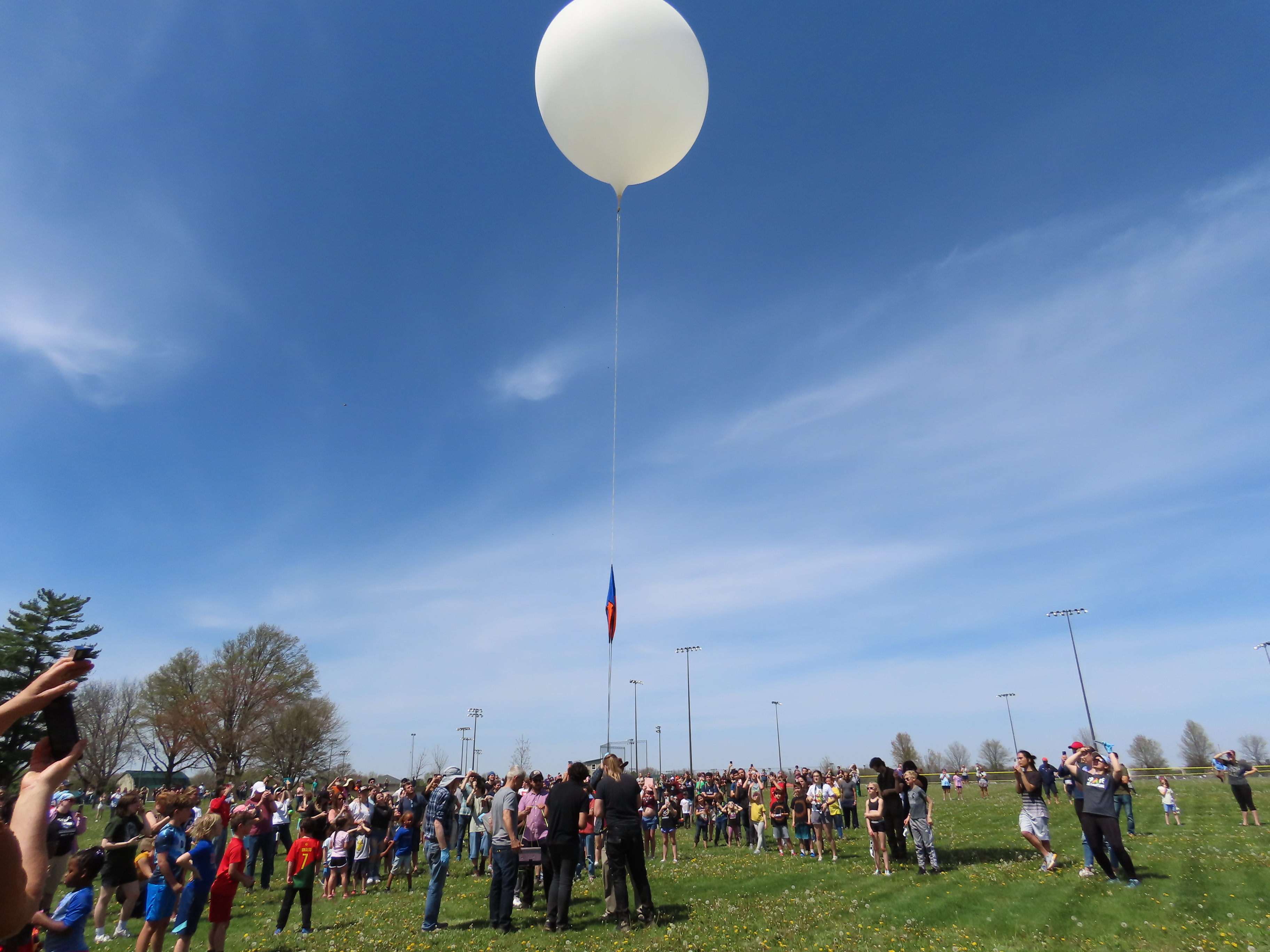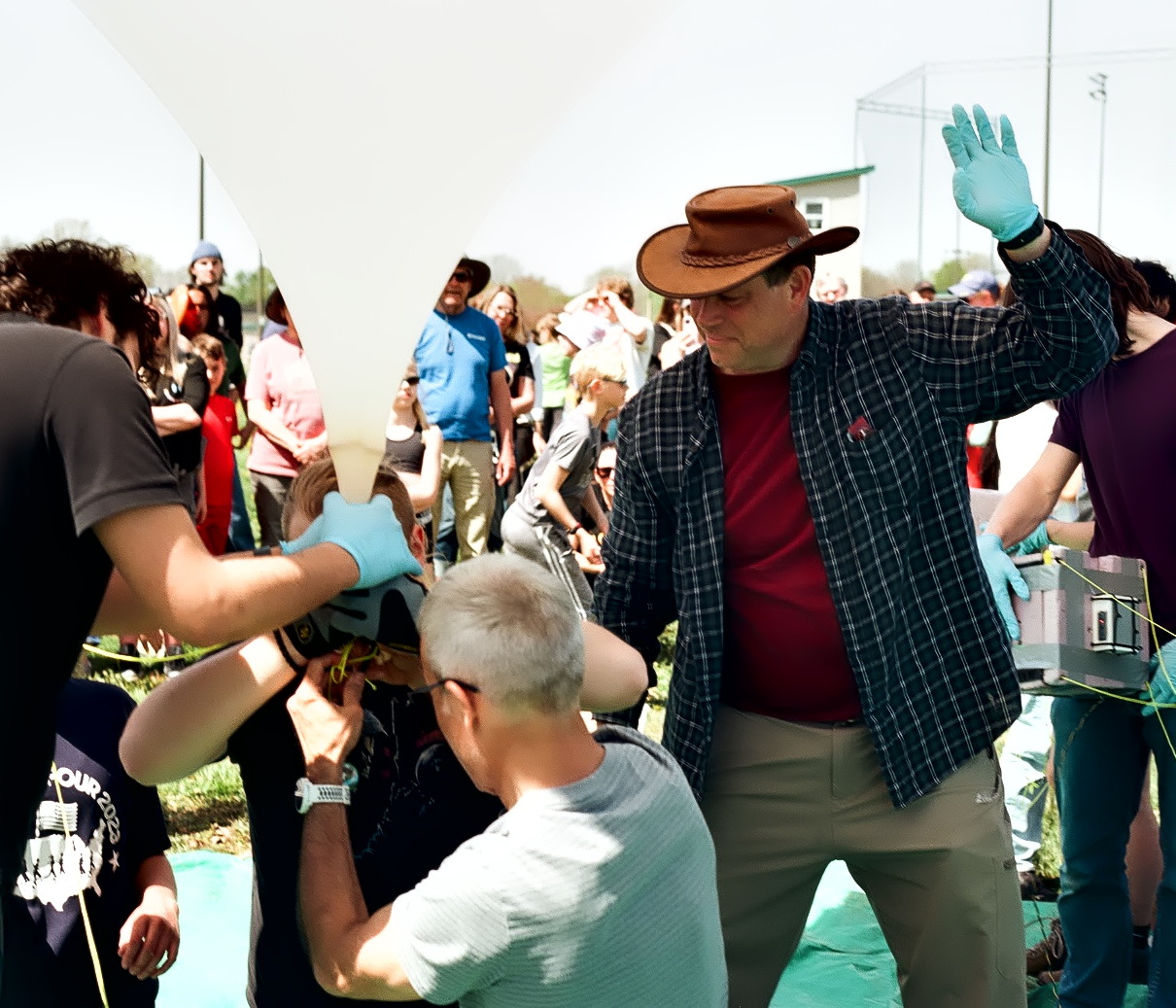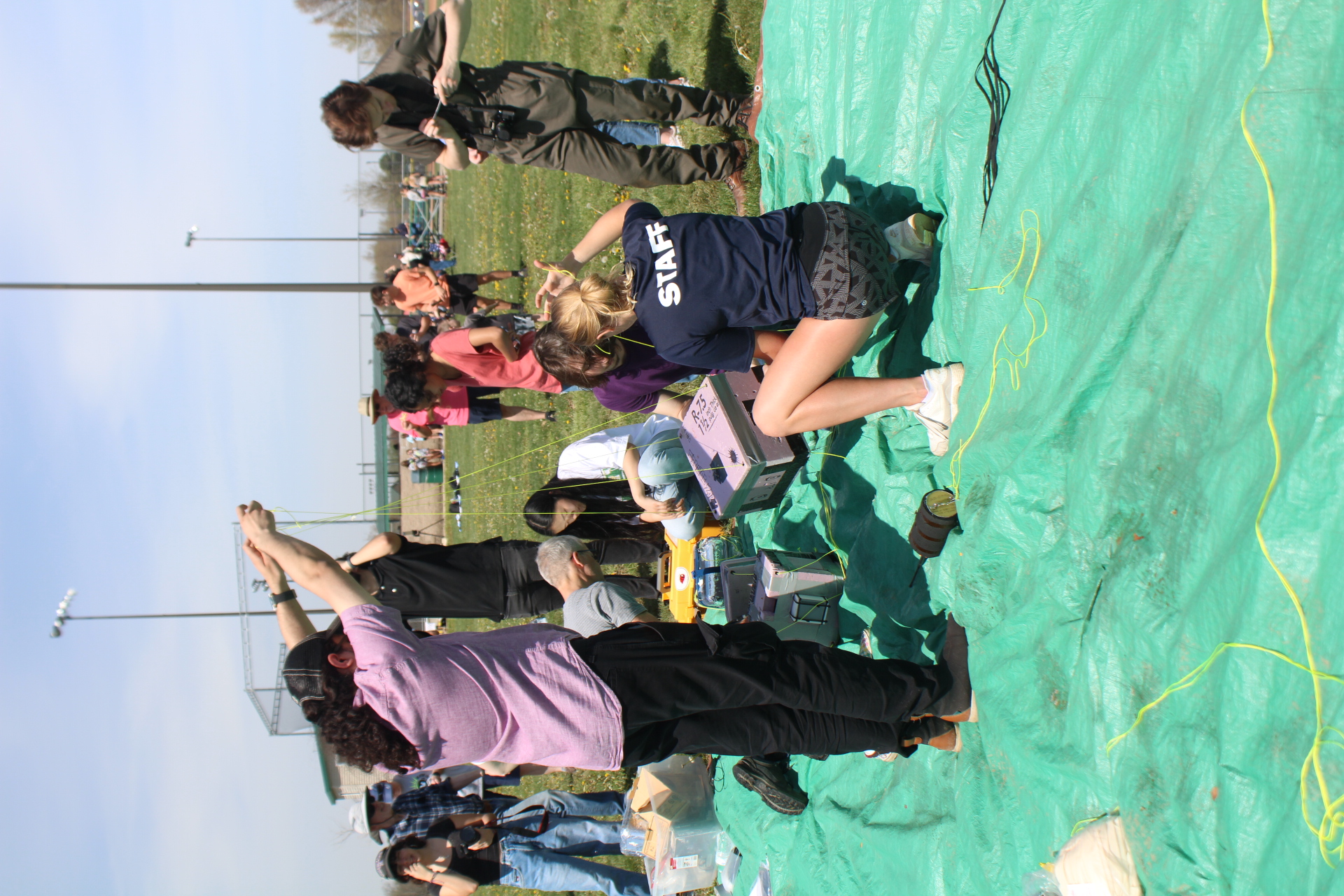 Crowds gather to watch students fly a high-altitude weather balloon during April's eclipse event.Physics and astrophysics student Elliott Stephenson remembers the sense of awe he felt witnessing this past April's total solar eclipse as part of a DePaul research team.
Crowds gather to watch students fly a high-altitude weather balloon during April's eclipse event.Physics and astrophysics student Elliott Stephenson remembers the sense of awe he felt witnessing this past April's total solar eclipse as part of a DePaul research team.
“Traveling with many of my peers from the physics department was very fun, but the most memorable part was the eclipse itself and the way the whole sky changed" Stephenson recalls.
Stephenson is one of nearly 50 undergraduate students who had the chance to study the rare event this past Spring with
funding support from the Illinois Space Grant Consortium, known as ISGC. The opportunity was open to all DePaul students, the majority of whom were Freshman. Also among the group was DePaul's former provost and physicist Marten Den Boer, who accompanied students on the trip, lending his support as they focused on their research.
For the main project, students and instructors gathered in Olney, Illinois on April 8 to observe the eclipse and fly a high-altitude balloon fitted with recording instruments capable of capturing data from the ground and sky. Students worked in small groups to develop their own hypotheses and design instruments for the launch project. The team also used a newly purchased solar telescope, funded by ISGC to support students in DePaul's new astrophysics major, to enhance their data collection efforts.
 Students prepare the balloon for launch with assistance from project supervisors Eric Landahl and Bernhard Beck-Winchatz, professors in the physics and astrophysics department.
Students prepare the balloon for launch with assistance from project supervisors Eric Landahl and Bernhard Beck-Winchatz, professors in the physics and astrophysics department.Spiros Simotas, another physics and astrophysics major and now first year student in DePaul's MS program, worked to design and print camera cases using special 3D-modeling software, with most of the work done at DePaul's
Idea Realization Lab 2. The cases were used to mount various recording equipment, including a spectroscopic apparatus – designed to split light into its constituent wavelengths – to measure different angles around the sun and moon at ground level.
Stephenson collaborated with peers Jordan Mamon and Isabella Foti to collect data from the spectroscopic tools. “Our objective was to study how the color spectrum of the sky changes throughout the duration of the eclipse" he explains.
The students faced several field and atmospheric challenges during the excursion, including strong stratospheric winds that ultimately caused the balloon and its high-altitude data to be lost.
“To remedy this problem, we used both helium tanks, which meant a faster ascent rate. This was our intention since a shorter flight time would limit drift but at the cost of a more aggressive balloon rupture. We believe that this aggressive rupture led to some sort of failure in the cord used to connect the payloads" Simotas says.
 Students assemble recording equipment for the flight.
Students assemble recording equipment for the flight.Regardless, the team captured a wealth of ground data that is currently being analyzed. These include unique images of the eclipse and information on angle, wavelength, and optical scattering from the atmosphere. Scattering occurs when light is deflected in multiple directions due to particles in the air. In addition to the solar telescope, two sun spotters were used to collect further imaging from the ground at various stag
es of the project.
“If all goes well, we plan on having students present a poster at the
Undergraduate STEM Research Showcase in November" shares Bernhard Beck-Winchatz, professor of physics and astrophysics and one of the project's lead organizers.
The experience was one the participants will never forget.
“The most memorable thing was the willingness and determination of all the students involved" Simotas says.
You can view a clip of the balloon launch on
Instagram.